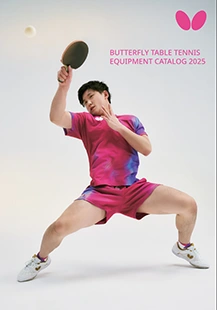One of the more subtle skills that some players master yet other players never practice is using fingers to apply pressure on the racket during certain strokes for both control and power. This is a more advanced technique that requires practice to achieve the right feeling, but mastering it can help greatly increase the consistency of certain strokes. For these tips, I will focus on the use of fingers for shakehand grip players.
- When hitting forehands, both drives and loops, most of the pressure is applied using the index finger and the back of the hand on the back side of the racket. The index finger especially is used to press on the back of the racket in order to feel the ball contact on the racket and make adjustments, as well as to provide pressure to contact the ball more solidly. The rest of the fingers, especially the thumb, are relatively more relaxed during this process. Here, we see Ma Long speaking about his grip and how he uses his index finger on his forehand. The link should go to the point in the video where he is talking about this particular aspect and goes for a little over 30 seconds. Although Ma Long speaks in Chinese, there are English subtitles.
- When hitting backhands, the thumb is used more actively to apply pressure to the racket rather than the index finger or the rest of the hand. From this point, we can see that it is the opposite of the forehand in terms of which side of the racket we want to apply pressure to when hitting a drive or loop. This makes sense logically; applying pressure to the back side of the racket when contacting the ball will apply additional force to the ball. Also, we can feel the contact of the ball more acutely in order to gain consistency and control. Again, we will listen to (and read) Ma Long explain this technique for the backhand side.
- The same techniques apply to forehand and backhand service returns. Using the appropriate fingers for each side give us much better control and allow us to utilize smaller strokes when returning serve. This is especially true when returning serve with the forehand, where using the index finger to feel ball contact gives much better feeling overall.
- One last technique to practice is the use of the middle through pinky fingers, the fingers that are wrapped around the handle of the blade. Applying pressure during contact with these three fingers can have the effect of absorbing the pace of the ball. This is especially useful when trying to slow the ball down, such as when blocking a powerful attack or attempting a drop shot. The tricky aspect of this technique is applying pressure with fingers but still performing a stroke and following through, especially when blocking. However, it can be very effective in maintaining control during these shots and taking a lot of pace off the ball.
I mentioned that these are techniques for shakehand players. For penhold players, there are similar techniques in terms of how the fingers should be used, especially subtleties in the use of the thumb and index finger that are wrapped around the handle of the blade. I would strongly suggest that penhold players who are serious about improving their game but have not learned these techniques seek the advice of advanced coaches who understand penhold technique to learn how to use the fingers appropriately.
These techniques take a lot of practice, but can really benefit you in making your strokes more consistent as well as improving spin and/or power. It can be very difficult to integrate them into your strokes and still maintain good mechanics, but with training it is an advanced technique that will give you a small edge over many opponents.
























